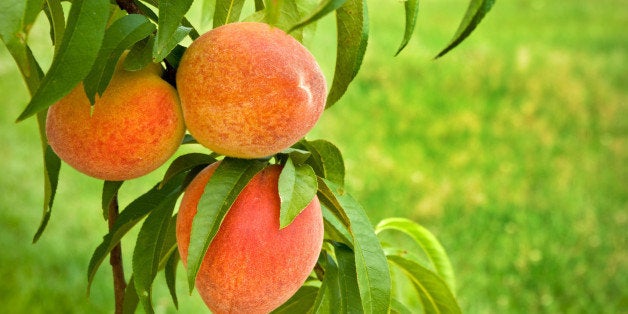
"Quaint" was the exact word she used. I'm speaking of how my friend and fruit cohort, Erica, described my May 2009 HuffPost blog entry, which introduced Food Forward, the grassroots, volunteer-powered, harvesting-for-the-hungry nonprofit I founded three and a half years ago here in Los Angeles. Having just re-read the post, I'd concur: "quaint" indeed.
At the time that post was written we had exactly one eager receiving partner for the backyard fruit that we gleaned: SOVA (a project of Jewish Family Service). Back then they were feeding 7,700 individuals a month. Flash forward three years -- and they are now feeding 12,795 people a month. The swelling in need at this one organization is mirrored by tragic spikes in food insecurity all across the country. Sobering stats for the best-fed nation on the planet to digest.
If once thing has grown clear to me in these last three years, it's that hunger in America is not only unnecessary, it is shameful. Period. Knowing the resources we have growing in this country and the appalling truth about our food waste (according to American Wasteland by Jonathan Bloom, we throw out over 40 percent of the food we create/grow/process), no American should be hungry. Not one.
One vital solution that costs nothing -- yes, nothing -- is a perspective shift around food. A mind-shift, a mentality shift, dare I say, a lifestyle shift. Whatever the name, it's a shift away from super-sizing life (only to throw half of it away) toward an understanding the healthiest piece of the solution to ending hunger in America is literally growing in our own yards and public spaces. We simply need to open our eyes to what's just feet from us, and commit to sharing it.
It's a realigning of priorities, a learning to take what we need, not what we feel entitled to, and then simply sharing the abundance. Having come through the last three years of economic upset by the skin of our teeth, humility alone should dictate a move in this direction. Yes, revel the plenty, then make the clear commitment to each pass the surplus along.
Food Forward is just one of several organizations across the country trying to spread the concept of Fruitanthropy: the collecting, picking, dispensing or receiving of fruit for humanitarian purposes. But in the three years since we began this work, word's gotten out and demand for our produce continues to surge past our volunteers' capacity to harvest.
Instead of one agency, our quaint little non-profit is now supplying more than 30 agencies of varying size across four southern California counties. As I write this, we are expanding the geography of our harvests, embarking on a new farmers market recovery program, and have begun reclaiming some of the millions of pounds of fresh produce trashed annually at our downtown wholesale market.
On one side of me is ever-rising demand -- a trend defying the slowly improving economy. On the other side there are numerous bountiful and untapped resources -- solutions staring us in the face, saying "pick me." In the middle of this is Food Forward, a literal and figurative bridge. One built with the collective commitment of thousands of individuals and the resulting community acting in unison to create the mechanism to both connect and make change.
We may only be three years into this adventure, but from the perspective of seeing the hundreds of thousands of trees we simply can't get to dropping thousands of tons of grade-A produce to the ground each year -- I can say with conviction that hunger in America is not about a deficiency of food but rather a deficiency in efficiency and the creation of effective distribution systems.
And just in case anyone would argue this is a solution unique to sunbelt states I'd point to other programs across the country: in Michigan, the Greater Lansing Food Bank has a program which gleans a quarter to a third of a million pounds a year from Michigan State University research farms. Meanwhile, on the East Coast, The Society of St. Andrew in Virginia rescues staggering amounts of gleaned produce and passes it along to the hungry across the nation, proving this is not some quaint novel old-world activity -- but something with huge potential and an essential part of the solution to ending hunger in America.
Just a few days ago, Richard Weinroth, Food Bank Director of MEND Poverty, another one of our receiving agencies, took part of his day off to help me pack up the one millionth pound of produce Food Forward has harvested. He told me of a recent survey his agency had taken of their 25,000-plus clients a month, asking them what they wanted more of from MEND's food program. Their overwhelming top response: fresh produce.
Even with three years of explosive growth and devotion from an amazing corps of volunteers, staff and supporters, Food Forward has barely scratched the surface of what is possible. Here's to sharing the abundance. Food -- it really does grow on trees.
To find out how you can get involved with any of Food Forward's programs, please visit foodforward.org. On August 24 and 31 and September 7, Food Forward will be holding three Happy Hours to Fight Hunger at LA-area restaurants where you can help us raise fund for our work and learn more about how to get involved with our mission to harvest food, fight hunger and build community.